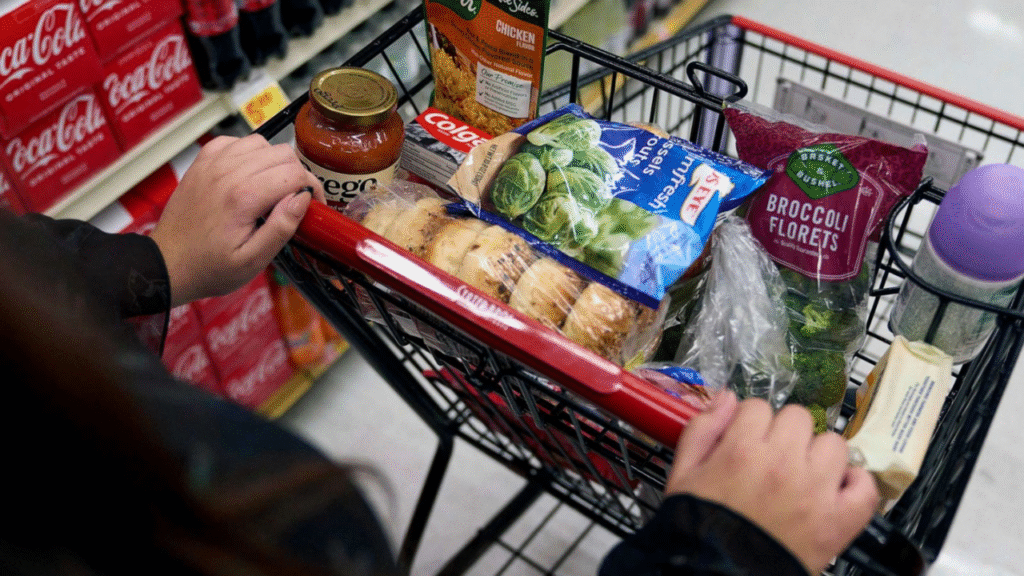The Supplemental Nutrition Assistance Program (SNAP), which serves as a lifeline for millions of low-income Americans, could undergo some drastic changes under the latest proposal from the Republican Party.
The proposal, which is described as “radical” by critics, aims to reshape SNAP, the country’s primary anti-hunger program, through cost-sharing with states, expanding work requirements, and placing limits on future benefit increases.
If passed, this legislation could impact food assistance for millions, especially at a time when food insecurity continues to affect vulnerable communities.
The proposal is part of a larger legislative package known as the “Trump megabill,” which includes a range of provisions designed to overhaul social safety nets.
These changes are expected to have wide-reaching consequences for those who rely on SNAP, and there is a growing debate about whether they will help or harm the very individuals they are intended to assist.
Let’s break down the key aspects of the proposal and explore what they mean for SNAP beneficiaries and the program’s future.
Cost-Sharing with States: A Shift in Responsibility
One of the major components of the proposal involves requiring states to contribute to the cost of SNAP starting in fiscal year 2028.
Currently, the federal government covers the entire cost of the program, but the proposed legislation would shift some of that burden onto individual states.
The cost-sharing would vary depending on each state’s “error rate” in administering benefits. States with higher error rates in distributing SNAP benefits would be required to pay a larger share of the costs, while states with fewer errors would start with a smaller contribution, possibly as low as 10 percent.
The critics of this shift, such as Kevin Thompson, CEO of 9i Capital Group, argue that this new financial responsibility could force states to make cuts to SNAP or other social services if they are unable to meet the financial demands.
The increased costs may lead to reductions in the number of people receiving benefits or cause states to cut funding for other critical programs, leaving many low-income families struggling to make ends meet.
Expansion of Work Requirements: A Potential Setback for Low-Income Workers
Another critical element of the Republican proposal is the expansion of work requirements for SNAP recipients. Under the plan, healthy adults with children aged 7 or older would be required to work or risk losing their benefits after three months of non-compliance.
While work requirements are not new to SNAP, this proposal goes a step further, making it harder for individuals to qualify for assistance unless they meet the newly expanded work criteria.
The Center on Budget and Policy Priorities (CBPP) estimates that this change could affect over 3 million adults and lead to a loss of benefits for more than 4 million children.
Critics of the proposal argue that these expanded work requirements do not take into account the precarious nature of low-income employment.
Many SNAP recipients are already working multiple jobs, but they often face unstable hours, inconsistent pay, and limited job opportunities, which can make it difficult to maintain steady employment.
The proposal’s impact on working families with children could be severe, particularly in areas where job opportunities are scarce or where individuals are struggling with underemployment.
Some people may be forced to choose between working part-time with insufficient hours or losing their access to essential food assistance. For many, this could be a difficult decision, as it may lead to even greater financial strain or food insecurity.
Limiting Future Benefit Increases: A Restriction on Support

Another significant change included in the Republican proposal is the limitation of future benefit increases. Currently, SNAP benefits are adjusted annually based on the Thrifty Food Plan, which determines the maximum benefit amount based on the cost of a basic, healthy diet.
The Biden administration recently adjusted SNAP benefits to account for the rising costs of food, providing families with additional assistance during a period of high inflation.
Under the Republican proposal, future increases to SNAP benefits would be made “cost-neutral,” meaning that adjustments would be based on available funds rather than the actual cost of food.
This proposal would reverse the recent changes made under the Biden administration, potentially limiting the amount of assistance available to SNAP recipients. As food prices continue to rise, many families could find that their benefits no longer cover the same amount of food as they once did.
The potential impact of these changes could be felt most acutely by individuals and families who rely on SNAP for their daily meals. With food prices fluctuating and inflation continuing to put pressure on household budgets, limiting benefit increases could exacerbate food insecurity for millions of low-income Americans.
The purchasing power of SNAP recipients would be significantly reduced, potentially leading to more families going hungry or struggling to access nutritious food.
Potential Impact on Low-Income Americans: A Tough Road Ahead
The proposed changes to SNAP are expected to have significant financial implications for millions of low-income Americans. According to the Congressional Budget Office (CBO), the expanded work requirements alone could save the federal government an estimated $40 billion.
While proponents of the proposal argue that these savings would help reduce government spending and encourage personal responsibility, analysts warn that the policy could harm those who are already struggling to make ends meet.
The proposed work requirements could strip food aid from individuals who are unable to find stable employment or who are facing caregiving responsibilities.
These changes may disproportionately impact women, particularly single mothers, who may be unable to meet the work requirements due to childcare or other caregiving duties. Similarly, individuals with disabilities or those living in rural areas where job opportunities are limited could face severe challenges in meeting the new standards.
Moreover, the cost-sharing proposal could lead to significant cuts in social services in states that struggle to meet the financial demands of the program. The increased financial burden could force states to reduce or eliminate services that are crucial for low-income individuals, further exacerbating poverty and inequality.
The Road Ahead: What’s Next for the Proposal?
The House Republicans plan to mark up the legislation on May 13 or 14, and if it passes through the budget reconciliation process, the changes could be enacted without Democratic support.
However, there are deep divisions within the Republican Party, particularly among members representing states that would face greater financial burdens under the cost-sharing formula.
Some Republicans are concerned that the proposal could hurt their constituents, and there is uncertainty about whether the bill will gain enough support to pass.
For now, the fate of the proposal remains uncertain, but if it is passed, the changes could fundamentally alter the landscape of the SNAP program and significantly affect millions of Americans who rely on food assistance to get by.
The debate over SNAP reform is far from over, and any changes to the program will have lasting consequences for the nation’s most vulnerable populations.
